- In the Garden
- >
- Gardens
- >
- Gardens I-P
- >
- Perennial Garden
Perennials are simply plants that live more than two years. Usually the term refers to plants with little or no woody growth, although technically trees and shrubs are perennials too. Our garden has a special section dedicated to these plants, but they are also found extensively throughout the entire garden. The formal Perennial Garden has a backdrop of Irish Yew (Taxus baccata), the other side being enclosed by a low wall of Haddington stone which frames the island beds. More perennials can be found in the Bentall Garden, the Black Garden, and other flower beds (sometimes annuals are mixed in to provide more colour and fill in bare spots).
Aconitum has many common names, including 'wolf's bane' and monkshood. It contains a narcotic alkaloid and was used to poison wolves. The Nepalese used it to poison their wells against the British Army; it might be worth looking into if one had murder in mind! [2013:] Aconitum x cammarum ‘Bicolor’ has lovely purple and white flowers. [Erica 1995]
Antirrhinum seeds were used in Russia to produce a very pure oil. The common annual snapdragon, Antirrhinum majus, naturalizes easily. [Erica 1995]
Artemesia lactiflora ‘Guizhou': [2013:] This variety of white mugwort has dark stems.[Erica 1995]
Arum is also called 'Lords & Ladies', referring to the seed heads looking very sedate and decorous; the berries were used in stiffening Elizabethan ruffs. [Erica 1995]
Aquilegia: Its common name, columbine, is so called because on close inspection one can see that the flower looks like a group of doves ('columba' in Latin), the five nectaries being their heads. [Erica 1995]
Asters in this Garden include Aster novi-belgii (smooth, glabrous leaves) and Symphyotrichum novae-angliae [formerly Aster novae-angliae] (hairy pubescent leaves). A. Amellus is smaller than other asters and is more commonly called 'Michaelmas Daisy'. It was named after the Feast of St.Michael and All Angels on September 29 when they are in bloom: this was a time to celebrate the harvest, the time of fall fairs, job trading, goose feasting and payment of rents! [Erica 1995]
Bergenia cordifolia is in the Saxifragaceae family and is known as 'pigsqueak' because of the noise made when rubbing a leaf, useful as a divertissement for adults and children alike! [Erica 1995]
Convallaria majalis: Lily of the valley refers to the 'white choral bells' of English folksong and can be quite invasive. [Erica 1995]
Cynara carnunculus: Cardoon must be staked early. The stalks are edible, but not the leaves, and taste like artichokes. In Italy, an alcoholic spirit is made from it.
Crambe maritima: Grey-leafed sea kale has sprays of white flowers, is edible and has big fleshy roots.
Crocosmia, also called montbretia, is a native of Africa. C. ‘Emberglow’ is a new variety – smaller than C. ‘Lucifer’ and doesn’t need support. C. ‘Emily McKenzie’ has big flat flowers but is not reliably hardy in our Garden.
Dahlia is native to Mexico and was hybridized by the Aztecs; the tubers were eaten by early explorers.[Erica 1995]
Daisy stands for 'day's eye' because the petals open at dawn and close at dusk. [Erica 1995]
Delphinium seeds were dried by the Egyptians during the time of the Pharaohs and were used to keep body vermin at bay. The name comes from the Greek word for dolphin, as their flowers look like the back of this animal. [Erica 1995] A forest of Delphinium New Millenium series provides much interest in early summer south of the Maze. They are cut back after flowering and often bloom again in early fall.
Dianthus barbatus is in the carnation family. Some say the common name originated in the French word for carnation, 'oeillet', which the English mispronounced, and so was born its name of Sweet William. [Erica 1995]
Eryngium has dome-shaped blue, purple or white flowers surrounded by spiny bracts. The genus comes from the Greek word for this plant, which grew wild in ancient Greece, and relates to its prickly nature. E. agavifolium, with its sword-like leaves and a height of 4-5 feet, is found in the Southern Hemisphere Garden. E. bourgatii (Mediterranean sea holly) has steely blue flowers. E. giganteum (Miss Wilmott's ghost) is found in the border in front of the Formal Rose Garden. E. planum (sea holly) is attractive to butterflies.
Hypericum is the Latin name for St. John's Work, which was worshipped by pagans as an emblem of the sun, and then became duly christianized. [Erica 1995]
Iris was named by the Greeks after the Goddess of the Rainbow, no doubt due to their lovely colours. From Iris germanica (German iris), I. florentina (Florentine iris), and I. pallida (Dalmatian iris), we get orris root used in perfumery. The fleur-de-lis of France is an iris and was adopted by Clovis V, King of the Franks. I. palaestina may have been the biblical lily. I. japonica is also known as the fringed iris, butterfly flower or shaga. [Erica 1995]
Kniphofia rooperi: The red-hot poker is a later-flowering architectural plant that was grown from seed.
Leonotis leonurus: A new cultivar, L.menthifolia ‘Savannah Sunset’, has a fuzzy crinkled orange flower.
Ligularia dentata: The leopardplant is grown more for its striking foliage than for its stalks of orange flowers.
Lobelia cardinalis was named after Roman Catholic cardinals' red stockings! [Erica 1995]
Lupinus: The lupine was thought in the old days to devour the soil (wolf-like)! Our lovely selection of colours is due to George Russell, an elderly, uneducated English working gardener in Yorkshire, who spent long, patient years working to develop better bicolours; his breakthrough Russell hybrids came when he was 85 years old, which should be an encouragement to us all! [Erica 1995]
Macleya cordata has yellow juice that was used as a dye in China and also as a disinfectant for insect bites. [Erica 1995]
Monarda: Bee balm attracts the hummingbirds. M. 'Jacob Cline' has dark red flowers.
Nymphoides peltata: This pond plant, also called yellow floating heart, is very invasive in our area.
Paeonia: The name of this genus comes from Greek mythology. P. lactiflora is herbaceous, P. suffruticosa is woody, and the Itoh hybrids are in between. P. suffruticosa, the moutan or hybrid tree peony, is revered in Asia as the 'King of Flowers'. It is a cultural symbol, especially in Japan and China, where it is a common theme of haiku and painting. P. obovata, the woodland peony, was introduced to the West by Ernest Wilson. [Erica 1995]
Physalis alkekengi is often called 'Chinese lantern'. It is a tomato relative; dried in its husks it keeps indefinitely, being used as a sweetener. [Erica 1995]
Polygonatum: Also known as Solomon's seal, this genus is found in several areas in our Garden. P. biflorum blooms in the Eastern North America Garden in mid-spring.
Primula veris is the cowslip; Primula vulgaris is the English primrose and is an aphrodisiac to the male sparrow! [Erica 1995]
Sedum: The stonecrops form a large family. S. 'Autumn Joy' has light green foliage and pale pink flowers while S. ‘Purple Emperor’ has plum-black leaves. S. 'Mr. Goodbud' has purply pink flowers.
Thalictrum: The meadow rue is related to the buttercup. T. delavayi ‘Hewitt’s Double’ has beautiful mauve double flowers, while T. flavum has frothy yellow ones.
Thistles are the emblem of Scotland, and the motto 'touch me who dares', came no doubt from the Scots' defense against the Vikings by piling thistles on the seashore as a prickly welcome! [Erica 1995]
Vinca, known as periwinkle, inhibits cell division and is used in cancer treatment. Grown on graves in Europe, especially those of children; people being executed wore wreaths of it. [Erica 1995] V. minor is now considered in BC as an unregulated invasive plant of concern.
Viola odorata was the third most popular flower in the florist's trade at one time. Josephine wore them on her wedding day. They reminded Napoleon of her, and he carried a locket of dried violets picked from Josephine's grave. [Erica 1995]
Zinnia was named after Professor Zinn of Goettingen University. It comes from Mexico. Montezuma, god-emperor of the Aztecs in the sixteenth century, was responsible for the cultivation of gardens equal to anything in Europe. [Erica 1995]
Antirrhinum seeds were used in Russia to produce a very pure oil. The common annual snapdragon, Antirrhinum majus, naturalizes easily. [Erica 1995]
Artemesia lactiflora ‘Guizhou': [2013:] This variety of white mugwort has dark stems.[Erica 1995]
Arum is also called 'Lords & Ladies', referring to the seed heads looking very sedate and decorous; the berries were used in stiffening Elizabethan ruffs. [Erica 1995]
Aquilegia: Its common name, columbine, is so called because on close inspection one can see that the flower looks like a group of doves ('columba' in Latin), the five nectaries being their heads. [Erica 1995]
Asters in this Garden include Aster novi-belgii (smooth, glabrous leaves) and Symphyotrichum novae-angliae [formerly Aster novae-angliae] (hairy pubescent leaves). A. Amellus is smaller than other asters and is more commonly called 'Michaelmas Daisy'. It was named after the Feast of St.Michael and All Angels on September 29 when they are in bloom: this was a time to celebrate the harvest, the time of fall fairs, job trading, goose feasting and payment of rents! [Erica 1995]
Bergenia cordifolia is in the Saxifragaceae family and is known as 'pigsqueak' because of the noise made when rubbing a leaf, useful as a divertissement for adults and children alike! [Erica 1995]
Convallaria majalis: Lily of the valley refers to the 'white choral bells' of English folksong and can be quite invasive. [Erica 1995]
Cynara carnunculus: Cardoon must be staked early. The stalks are edible, but not the leaves, and taste like artichokes. In Italy, an alcoholic spirit is made from it.
Crambe maritima: Grey-leafed sea kale has sprays of white flowers, is edible and has big fleshy roots.
Crocosmia, also called montbretia, is a native of Africa. C. ‘Emberglow’ is a new variety – smaller than C. ‘Lucifer’ and doesn’t need support. C. ‘Emily McKenzie’ has big flat flowers but is not reliably hardy in our Garden.
Dahlia is native to Mexico and was hybridized by the Aztecs; the tubers were eaten by early explorers.[Erica 1995]
Daisy stands for 'day's eye' because the petals open at dawn and close at dusk. [Erica 1995]
Delphinium seeds were dried by the Egyptians during the time of the Pharaohs and were used to keep body vermin at bay. The name comes from the Greek word for dolphin, as their flowers look like the back of this animal. [Erica 1995] A forest of Delphinium New Millenium series provides much interest in early summer south of the Maze. They are cut back after flowering and often bloom again in early fall.
Dianthus barbatus is in the carnation family. Some say the common name originated in the French word for carnation, 'oeillet', which the English mispronounced, and so was born its name of Sweet William. [Erica 1995]
Eryngium has dome-shaped blue, purple or white flowers surrounded by spiny bracts. The genus comes from the Greek word for this plant, which grew wild in ancient Greece, and relates to its prickly nature. E. agavifolium, with its sword-like leaves and a height of 4-5 feet, is found in the Southern Hemisphere Garden. E. bourgatii (Mediterranean sea holly) has steely blue flowers. E. giganteum (Miss Wilmott's ghost) is found in the border in front of the Formal Rose Garden. E. planum (sea holly) is attractive to butterflies.
Hypericum is the Latin name for St. John's Work, which was worshipped by pagans as an emblem of the sun, and then became duly christianized. [Erica 1995]
Iris was named by the Greeks after the Goddess of the Rainbow, no doubt due to their lovely colours. From Iris germanica (German iris), I. florentina (Florentine iris), and I. pallida (Dalmatian iris), we get orris root used in perfumery. The fleur-de-lis of France is an iris and was adopted by Clovis V, King of the Franks. I. palaestina may have been the biblical lily. I. japonica is also known as the fringed iris, butterfly flower or shaga. [Erica 1995]
Kniphofia rooperi: The red-hot poker is a later-flowering architectural plant that was grown from seed.
Leonotis leonurus: A new cultivar, L.menthifolia ‘Savannah Sunset’, has a fuzzy crinkled orange flower.
Ligularia dentata: The leopardplant is grown more for its striking foliage than for its stalks of orange flowers.
Lobelia cardinalis was named after Roman Catholic cardinals' red stockings! [Erica 1995]
Lupinus: The lupine was thought in the old days to devour the soil (wolf-like)! Our lovely selection of colours is due to George Russell, an elderly, uneducated English working gardener in Yorkshire, who spent long, patient years working to develop better bicolours; his breakthrough Russell hybrids came when he was 85 years old, which should be an encouragement to us all! [Erica 1995]
Macleya cordata has yellow juice that was used as a dye in China and also as a disinfectant for insect bites. [Erica 1995]
Monarda: Bee balm attracts the hummingbirds. M. 'Jacob Cline' has dark red flowers.
Nymphoides peltata: This pond plant, also called yellow floating heart, is very invasive in our area.
Paeonia: The name of this genus comes from Greek mythology. P. lactiflora is herbaceous, P. suffruticosa is woody, and the Itoh hybrids are in between. P. suffruticosa, the moutan or hybrid tree peony, is revered in Asia as the 'King of Flowers'. It is a cultural symbol, especially in Japan and China, where it is a common theme of haiku and painting. P. obovata, the woodland peony, was introduced to the West by Ernest Wilson. [Erica 1995]
Physalis alkekengi is often called 'Chinese lantern'. It is a tomato relative; dried in its husks it keeps indefinitely, being used as a sweetener. [Erica 1995]
Polygonatum: Also known as Solomon's seal, this genus is found in several areas in our Garden. P. biflorum blooms in the Eastern North America Garden in mid-spring.
Primula veris is the cowslip; Primula vulgaris is the English primrose and is an aphrodisiac to the male sparrow! [Erica 1995]
Sedum: The stonecrops form a large family. S. 'Autumn Joy' has light green foliage and pale pink flowers while S. ‘Purple Emperor’ has plum-black leaves. S. 'Mr. Goodbud' has purply pink flowers.
Thalictrum: The meadow rue is related to the buttercup. T. delavayi ‘Hewitt’s Double’ has beautiful mauve double flowers, while T. flavum has frothy yellow ones.
Thistles are the emblem of Scotland, and the motto 'touch me who dares', came no doubt from the Scots' defense against the Vikings by piling thistles on the seashore as a prickly welcome! [Erica 1995]
Vinca, known as periwinkle, inhibits cell division and is used in cancer treatment. Grown on graves in Europe, especially those of children; people being executed wore wreaths of it. [Erica 1995] V. minor is now considered in BC as an unregulated invasive plant of concern.
Viola odorata was the third most popular flower in the florist's trade at one time. Josephine wore them on her wedding day. They reminded Napoleon of her, and he carried a locket of dried violets picked from Josephine's grave. [Erica 1995]
Zinnia was named after Professor Zinn of Goettingen University. It comes from Mexico. Montezuma, god-emperor of the Aztecs in the sixteenth century, was responsible for the cultivation of gardens equal to anything in Europe. [Erica 1995]
Perennial Garden

Astrantia major subsp. involucrata 'Shaggy'
CA$0.00
CA$0.00

Astrantia major 'Star of Fire'
CA$0.00
CA$0.00
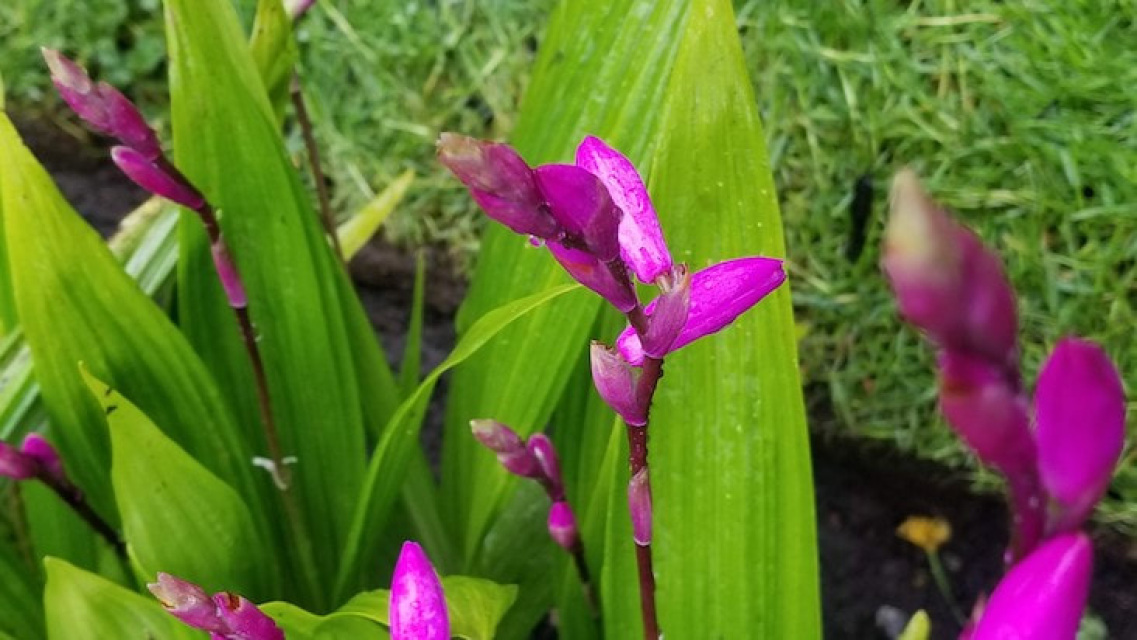
Bletilla striata
CA$0.00
CA$0.00

Cephalaria gigantea
CA$0.00
CA$0.00

Crambe maritima
CA$0.00
CA$0.00

Crocosmia x crocosmiiflora 'Emily Mckenzie'
CA$0.00
CA$0.00

Cynara cardunculus
CA$0.00
CA$0.00

Eryngium giganteum 'Silver Ghost'
CA$0.00
CA$0.00

Eryngium planum 'Blue Hobbit'
CA$0.00
CA$0.00

Fagus sylvatica 'Pendula'
CA$0.00
CA$0.00

Fritillaria imperialis
CA$0.00
CA$0.00
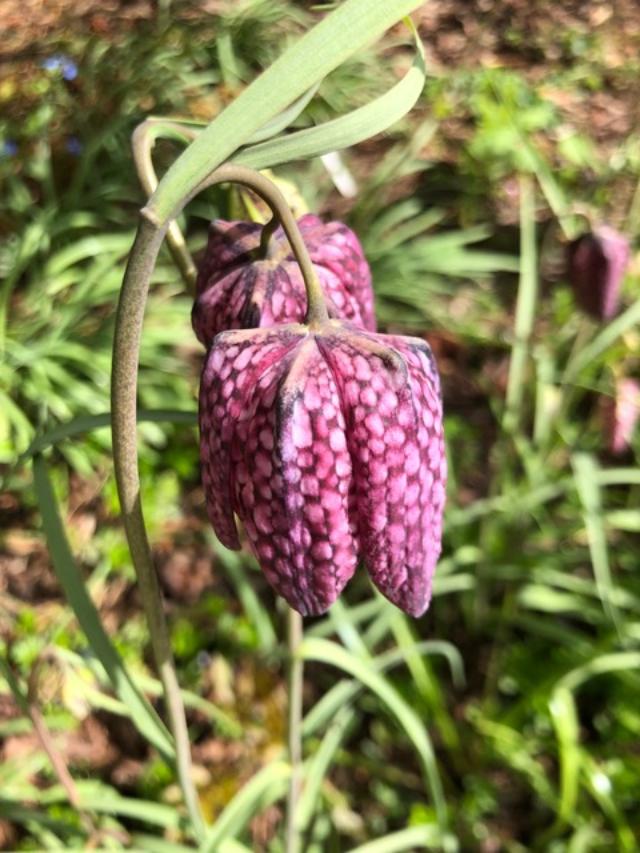
Fritillaria meleagris
CA$0.00
CA$0.00

Heuchera 'Midnight Rose'
CA$0.00
CA$0.00

Heuchera 'Sugar Plum'
CA$0.00
CA$0.00
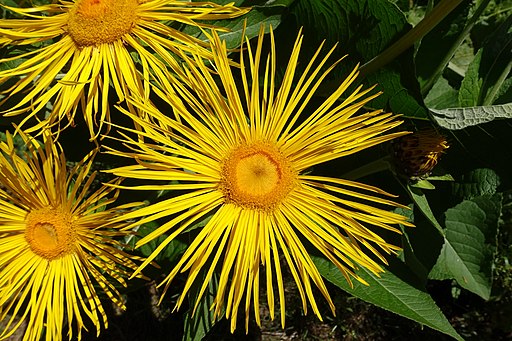
Inula magnifica 'Sonnenstrahl'
CA$0.00
CA$0.00

Iris sibirica 'Sky Wings'
CA$0.00
CA$0.00

Kniphofia uvaria
CA$0.00
CA$0.00
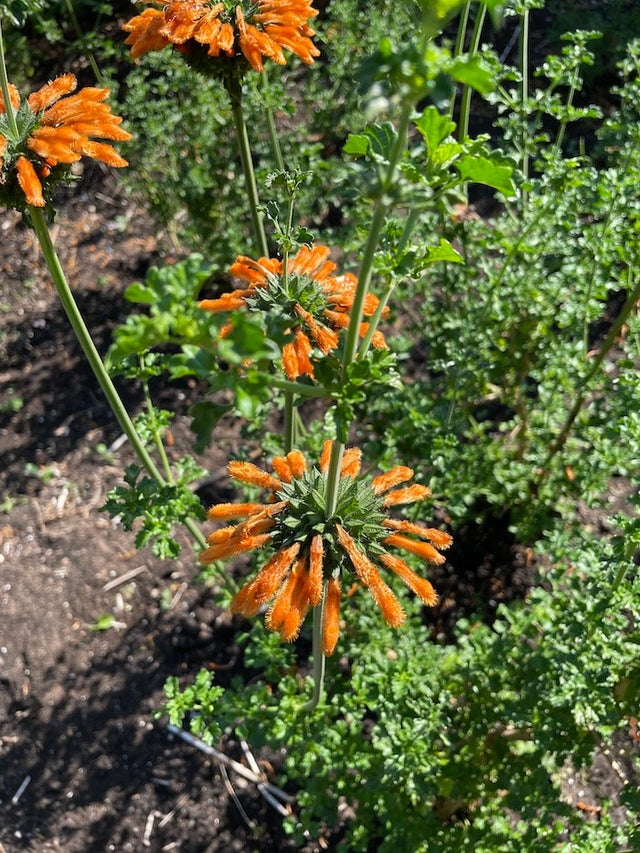
Leonotis menthifolia 'Savannah Sunset'
CA$0.00
CA$0.00

Ligularia 'Britt Marie Crawford'
CA$0.00
CA$0.00

Monarda 'Jacob Cline'
CA$0.00
CA$0.00

Phlox paniculata 'Franz Schubert'
CA$0.00
CA$0.00
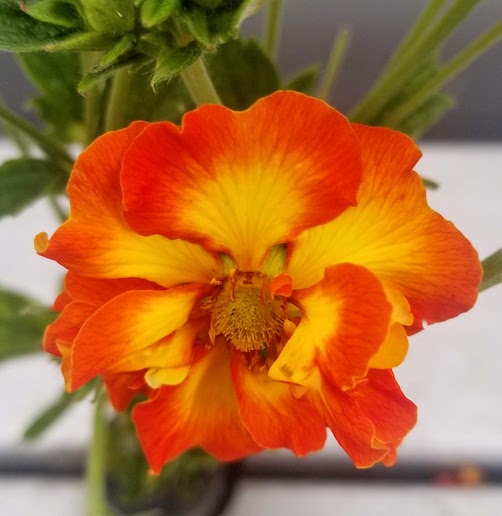
Potentilla 'William Rollison'
CA$0.00
CA$0.00

Sedum telephium 'Matrona'
CA$0.00
CA$0.00

Sedum telephium 'Purple Emperor'
CA$0.00
CA$0.00

Solidago 'Golden Baby'
CA$0.00
CA$0.00

Veronicastrum genus
CA$0.00
CA$0.00